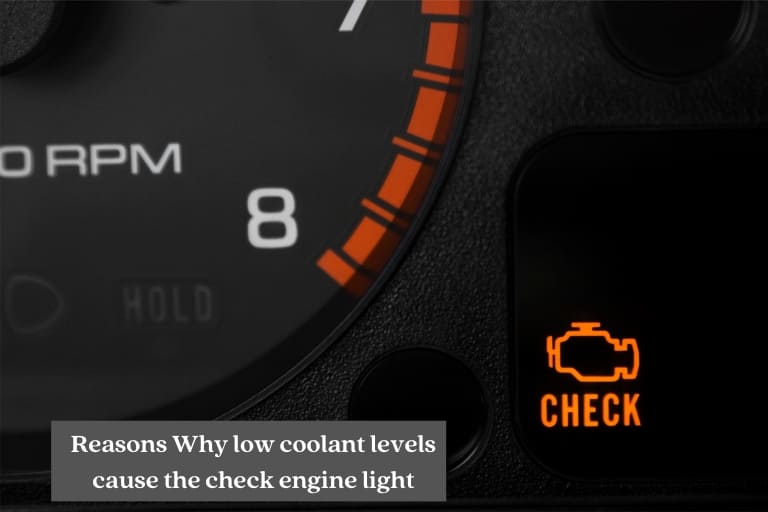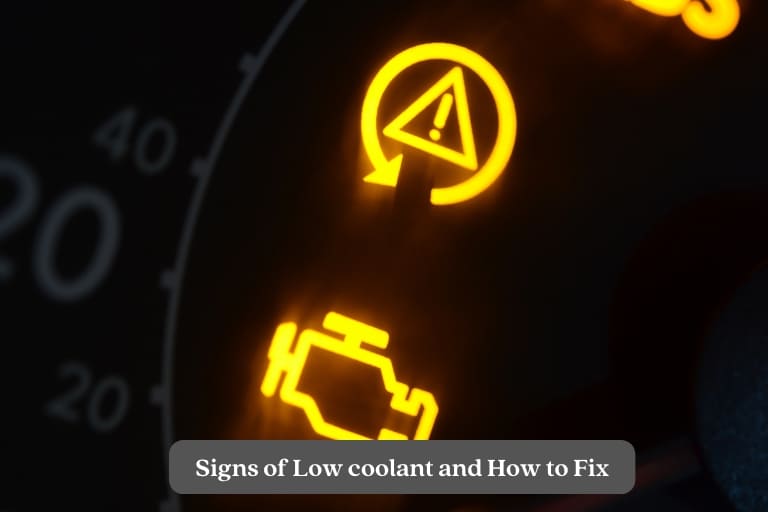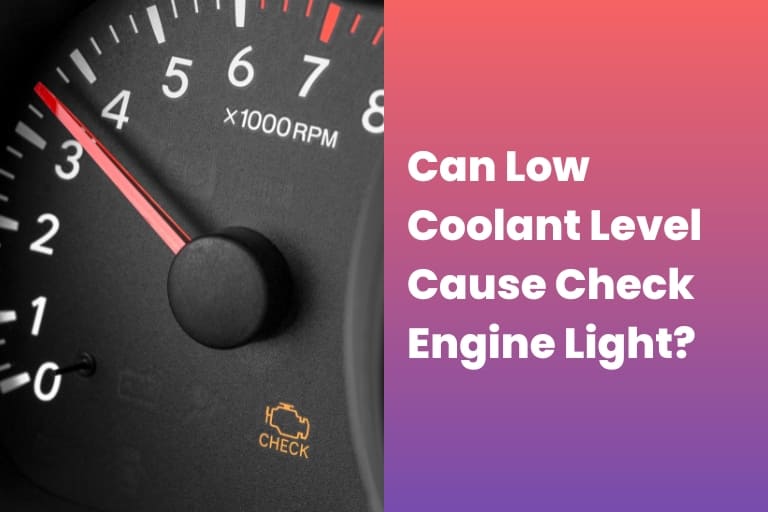If you’re a car owner, you might have noticed a “check engine” light on your dashboard. This warning light indicates something is wrong with your vehicle, and various issues could trigger it. One familiar question car owners have whether a low coolant level can cause the check engine light to come on.
Coolant is an essential component of a vehicle’s cooling system, which helps regulate the engine’s temperature. If the coolant level is too low, it can cause the engine to overheat, potentially damaging it. This, in turn, can trigger the check engine light. However, a low coolant level is one of many reasons why the check engine light might come on. There could be a range of other issues causing the warning light to illuminate.
This article will explore whether a low coolant level can cause the check engine light to come on and what other factors can trigger the warning.
Contents
Can a low coolant level cause a check engine light?
Absolutely! A low coolant level can cause a check engine light to turn on.
Here’s how it works: Your vehicle’s engine control module (ECM) constantly keeps tabs on various systems and sensors, including the coolant level sensor. If the coolant level is low, the sensor sends a signal to the ECM, which can trigger the check engine light to come on.
The coolant system is an essential part of your engine’s overall health, and it’s connected to the engine control system through a network of sensors and actuators. Along with the coolant level sensor, other sensors in the coolant system measure things like temperature and pressure. This information helps the ECM adjust engine performance, timing, and fuel injection.
When your coolant level is low, your engine might overheat, which is terrible news for your engine’s components. The ECM will detect this and may turn on the check engine light to warn you that your engine has a problem. A low coolant level can also lead to reduced performance, decreased fuel efficiency, and increased emissions. As a result, it’s critical to keep an eye on your coolant level and rectify any concerns as soon as possible.
A low coolant level can cause a check engine light to come on. Your coolant and engine control systems are closely linked, so if one isn’t working properly, it can affect the other. It’s always best to stay on top of your coolant level and ensure everything runs smoothly to avoid potential engine damage.
Reasons Why low coolant levels cause the check engine light

Low coolant level can cause the check engine light to turn on for a few reasons:
First, if there’s not enough coolant in the system, it can cause the engine to overheat or run at a higher temperature than it should. This temperature rise can cause damage to various components in the engine, so the check engine light may come on to warn you of the issue.
Another reason low coolant levels can cause the check engine light to turn on is miscommunication. The coolant level sensor can occasionally fail or transmit false signals to the ECM. This can lead to false readings and trigger the check engine light to turn on, even if there isn’t a problem with the coolant level. In this instance, it is critical to have the sensor tested to ensure that it is functioning correctly.
Finally, some cars don’t have a dedicated coolant light, so the check engine light may warn for low coolant levels. Low coolant levels can cause engine damage and affect engine performance, which the ECM constantly monitors. As a result, the check engine light may illuminate to signal a problem with the engine.
When any of these causes occur, it can lead to the check engine light being activated. If the engine temperature rises due to low coolant levels, the ECM will detect this and may trigger the check engine light to turn on. This is because the engine is at risk of being damaged, and the ECM wants to alert the driver to the issue so they can address it.
Similarly, miscommunication between the coolant level sensor and the ECM can cause the check engine light to turn on. The ECM relies on accurate sensor readings to monitor the engine’s health and performance. If there’s a problem with the sensor, it can cause the ECM to think there’s an issue with the coolant level, leading to the activation of the check engine light.
Finally, if there’s no dedicated coolant light in the car, the check engine light may be the only warning you get when your coolant levels are low. This is because the ECM constantly monitors various aspects of the engine, including the coolant system. If there’s an issue, it will likely trigger the check engine light to turn on to indicate something is wrong.
Signs of Low coolant and How to Fix

Signs of low coolant can include an illuminated check engine light, rising engine temperature, and a coolant leak. If you notice any of these signs, addressing the issue immediately is essential to avoid engine damage.
Steps to fix low coolant levels:
- Check the coolant level: The first step is your vehicle’s coolant level. You can identify the coolant reservoir and compare the level to the marks on the reservoir’s side.
- Add coolant: If the coolant level is low, you’ll need to add more. Be sure to use the coolant your vehicle’s manufacturer recommended and follow the instructions on the container. Filling the reservoir appropriately is important, as this can cause problems.
- Check for leaks: Once you’ve added coolant, check for any leaks in the system. Look for signs of coolant on the ground or various components under the hood. If you discover a leak, you must repair it quickly.
- Check the coolant system: If you’re still experiencing issues after adding coolant and checking for leaks, there may be a problem with the coolant system itself. To diagnose the problem, you may need to have the system evaluated by a professional.
- Monitor the coolant level: After addressing the issue, monitor it regularly to ensure it remains at the appropriate level. If you notice the level dropping again, it could indicate a larger issue with the system.
Following these steps, you can fix low coolant levels and ensure your vehicle runs smoothly. Note that low coolant levels should be addressed as soon as possible to avoid potential engine damage and costly repairs later.
Also, Check the following:
- 9 Signs You Need a Coolant Flush
- Can Low Coolant Level Cause a Check Engine Light?
- Why Is the Air Compressor Pushing Coolant Out?
- Coolant Under Pressure When Cold
- Coolant Coming Out of the Overflow
- Can You Put Ice in Your Coolant?
- What Happens if You Don’t Flush Coolant?
- Can Coolant Flush Cause Leaks?
- No Coolant in the Radiator, but Reservoir Tank is Full
- Do Cars Lose Coolant Over Time?
- Coolant Coming Out of the Radiator Cap When Removed
- Does Coolant Evaporate?
Frequently Asked Questions
Is there any warning light for low coolant?
Some cars have a dedicated coolant light that will turn on when the coolant is low. However, not all cars have this feature, so in many cases, the check engine light may be the only warning that the coolant level is low. Various issues, including low coolant levels, can trigger the check engine light.
Conclusion
In conclusion, we have discussed several aspects of low coolant levels and their impact on the check engine light. We have learned that a low coolant level can trigger the check engine light due to rising engine temperature, miscommunication, and lack of a dedicated warning light. We also discussed the connection between the coolant and engine control systems.
It is essential to recognize the signs of low coolant, including illuminated warning lights, rising engine temperature, and coolant leaks. Regularly maintaining and monitoring coolant levels can prevent these issues and help prevent potential engine damage. In addition to checking the coolant level, following the manufacturer’s recommended maintenance schedule for your vehicle, including regular inspections and fluid changes, is essential.
By taking care of your vehicle’s coolant system and ensuring that the coolant level is appropriate, you can prevent the check engine light from turning on and potentially costly repairs down the road. Maintaining your vehicle’s smooth operation and safety requires routine maintenance and system monitoring.
